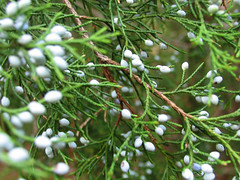PRATT – Seventy-two Kansas-based nonprofit organizations have already applied for the coveted
Kansas Wildlife, Parks and Tourism Commission Big Game Permits, but there is still time left for other organizations to apply. Applicants have until Jan.1, 2014 to apply for one of seven big game permits to be drawn at the Jan. 9, 2014 commission meeting. Permits may include one elk, one antelope or up to seven deer, depending upon the preferences of the drawn organizations.
Any Kansas-based nonprofit organization that actively promotes wildlife conservation and the hunting and fishing heritage is eligible to apply. Only one permit per organization will be awarded; however, individual chapters of the same organization may receive permits. A chapter or organization is eligible to receive only one Commission Big Game permit in a three-year period.
Organizations that draw a permit must pay KDWPT the permit fee, and they will be issued a voucher. The voucher can then be auctioned off to raise money for conservation projects. The final recipient must remit the voucher to KDWPT’s licensing section to receive the big game permit. Permits may be issued to resident or nonresident hunters and are valid in management units and seasons listed on the permits.
To apply, organizations must submit an application that includes a copy of their 501(c)(3) nonprofit status, articles of incorporation and mission statement, as well as the organization’s preference for an elk, antelope or deer permit. Applications can be downloaded from KDWPT’s website, www.ksoutdoors.com; enter “2013 Commission Big Game Permit” in the search box. Mail applications to Sheila Kemmis, Commission Secretary, Kansas Department of Wildlife, Parks and Tourism, 512 SE 25th Ave., Pratt, KS 67124.
Once an organization sells a permit, not less than 85 percent of the amount is returned to KDWPT to be spent on mutually agreed-upon projects. The remaining 15 percent can be spent at the organization’s discretion. (If Kansas Farmers and Hunters Feeding the Hungry (KFHFH) receives a permit, not less than 15 percent of the funds raised is remitted to KDWPT with 85 percent staying with KFHFH.)
















